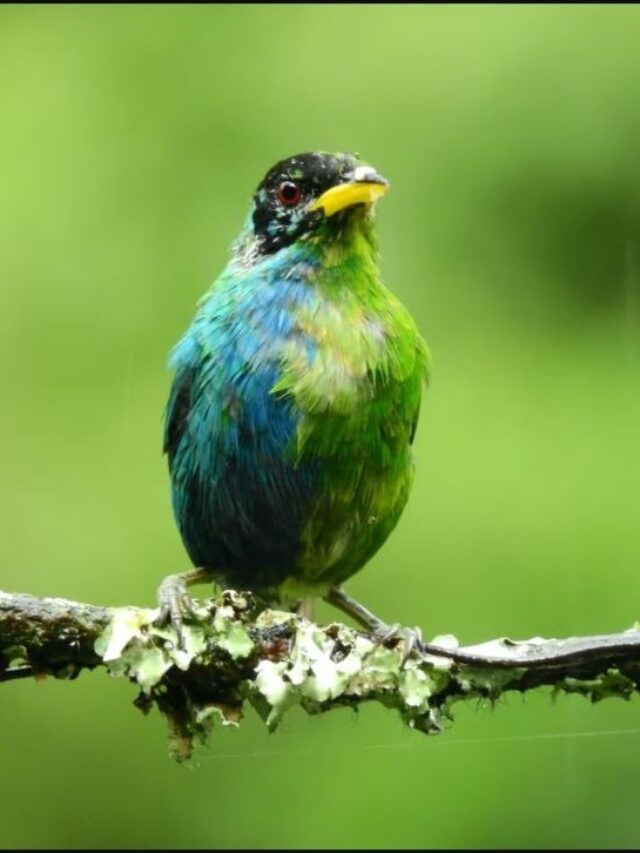HALF-MALE, HALF-FEMALE BIRD CAPTURED ON CAMERA FIRST TIME EVER IN OVER 100 YEARS, SCIENTISTS LEFT PUZZLED.
A green honeycreeper (Chlorophanes spiza) exhibiting male plumage on one side of its body and female coloring on the other has been captured on camera for the first time. The only other potential record of such a bird was documented over a century ago.
The bird’s plumage is distinctly divided down the middle, with the right side displaying the typical blue feathers of males, while the left side showcases the emerald-green feathers of females. This unique characteristic is known as bilateral gynandromorphism.
According to senior author and evolutionary geneticist Hamish Spencer, a Sesquicentennial Distinguished Professor in the Department of Zoology at the University of Otago, encountering a bilateral gynandromorph in any bird species is an exceedingly rare occurrence. He stated, “Many bird watchers could spend their entire lives without ever witnessing such a phenomenon. To my knowledge, there have been no documented examples of this in New Zealand.”
However, visual confirmation alone was insufficient to determine if the bird’s internal organs also exhibited bilateral gynandromorphism. Researchers mentioned, “It is impossible to ascertain whether our bird’s internal organs were also bilaterally gynandromorphic.” To gain further insights, they diligently studied the rare bird for a period of 21 months, observing its return to feed on fresh fruit and sugar water provided daily by the owners of the Colombian farm.









